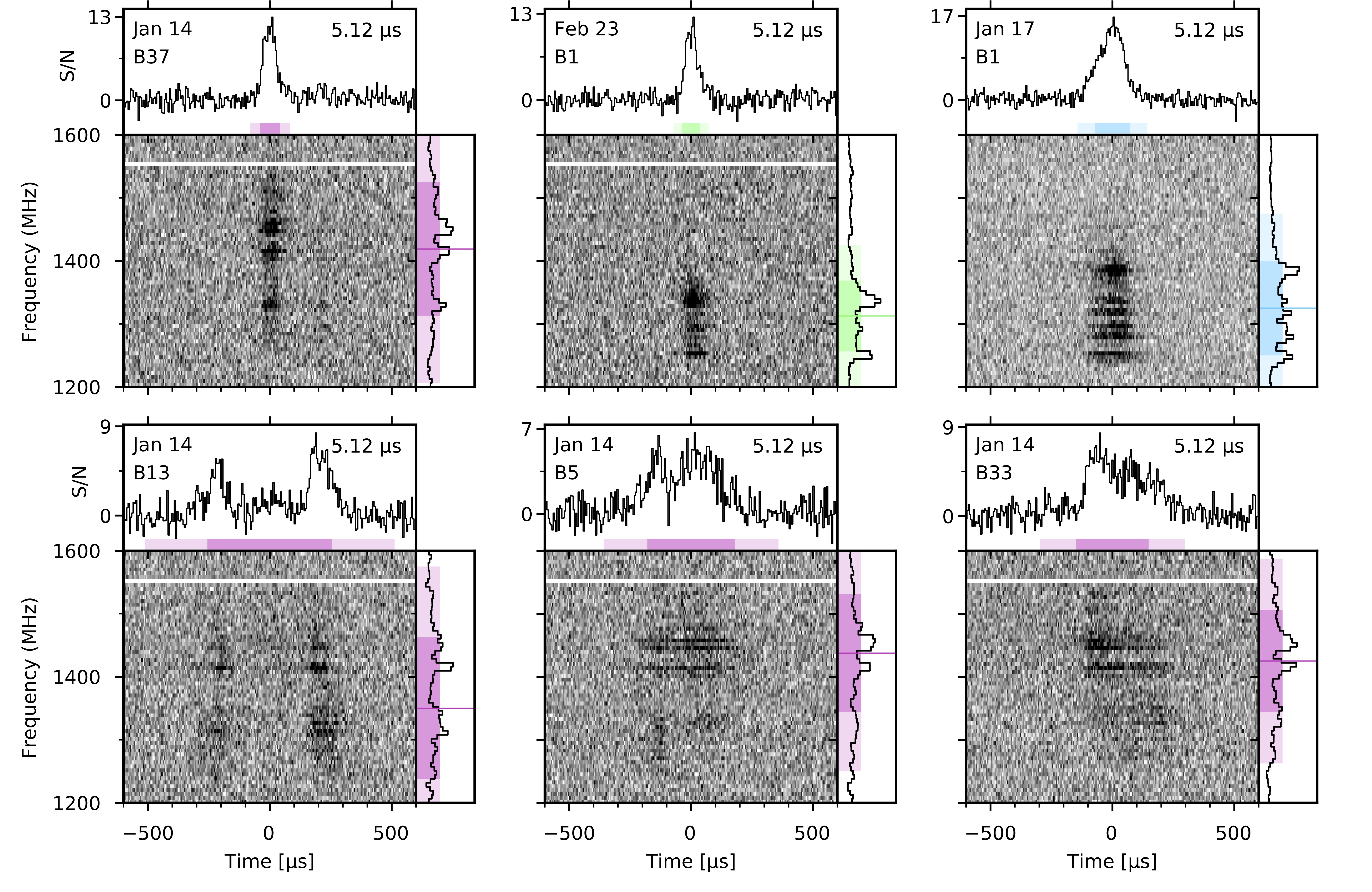 April 29, 2023
April 29, 2023
The repeating fast radio burst (FRB) source FRB 20200120E is exceptional because of its proximity and association with a globular cluster. Here we report 60 bursts detected with the Effelsberg telescope at 1.4 GHz. We observe large variations in the burst rate, and report the first FRB 20200120E 'burst storm', where the source suddenly became active and 53 bursts (fluence ≥0.04 Jy ms) occurred within only 40 min. We find no strict periodicity in the burst arrival times, nor any evidence for periodicity in the source's activity between observations. The burst storm shows a steep energy distribution (power-law index α = 2.39 ± 0.12) and a bimodal wait-time distribution, with log-normal means of ~0.94 s and 23.61 s. We attribute these wait-time distribution peaks to a characteristic event time-scale and pseudo-Poisson burst rate, respectively. The secondary wait-time peak at ~1 s is ~50 × longer than the ~24 ms time-scale seen for both FRB 20121102A and FRB 20201124A - potentially indicating a larger emission region, or slower burst propagation. FRB 20200120E shows order-of-magnitude lower burst durations and luminosities compared with FRB 20121102A and FRB 20201124A. Lastly, in contrast to FRB 20121102A, which has observed dispersion measure (DM) variations of ΔDM > 1 pc cm-3 on month-to-year time-scales, we determine that FRB 20200120E's DM has remained stable (ΔDM < 0.15 pc cm-3) over >10 months. Overall, the observational characteristics of FRB 20200120E deviate quantitatively from other active repeaters, but it is unclear whether it is qualitatively a different type of source.
Nimmo, K., Hessels, J. W. T., Snelders, M. P., et al. 2023, MNRAS Volume 520, Issue 2, pp.2281-2305.
